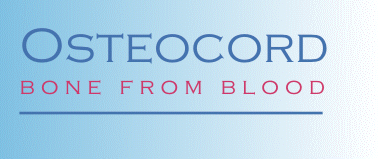A European Union 6th Framework funded project with €2.5 million funding over 3 years |
Basic Science
What is so special about stem cells?
Stem cells are 'blank' cells that can replicate themselves indefinitely, or given the right triggers, grow into specialised cells for specific areas of the body. In adults, a few types of cell, such as blood, bone marrow or nerves, are unable to replicate themselves by normal cell division. Within these parts of the body a small quantity of stem cells are found that are used to repair and replace damaged cells.
Most adult stem cells can only differentiate to become the type of cell for which they are intended. However, it appears that a very few types of adult stem cells have a characteristic known as plasticity which means they they can differentiate into other types of cell.
Early human embryos (<5 days after fertilisation) contain a collection of unspecialised stem cells. Unlike adult stem cells these embryonic stem cells have the potential to become any type of cell in the human body. This makes them especially interesting to scientists.
The potential of stem cells in medicine
Researchers are trying to find ways of understanding the replication and differentiation of different types of stem cell. If we can understand the way they work, then we may be able to control their development into different types of cells. This could in turn help people who are suffering from injuries to their nervous system, bones or from blood disorders by growing new cells to replace those damaged or lost. If we understand how embryonic stem cells differentiate into the myriad of different cells that make up the human body we may be able to prevent birth defects or understand what triggers cancers later in life.
Currently there is great interest in the potential of stem cells to help sufferers of diseases without cures such as cystic fibrosis, diabetes, leukaemia, multiple sclerosis, muscular dystrophy, osteoporosis and Parkinson's disease. There may also be the chance to help people who have broken limbs or burns.
Where OsteoCord fits in
Mesenchymal stem cells are found in adult bone marrow. They are able to form tissues such as bone and cartilage (through osteogenesis) and therefore may be used to help treat damage and disease that affect the skeleton. Some evidence suggests that mesenchymal stem cells may also be able to generate non-skeletal tissues such as brain and liver and do not provoke immune reactions when transplanted into unmatched recipients. These are valuable cells, but extracting them from marrow can be difficult and painful. Recent work indicates that mesenchymal stem cells can also be found in umbilical cord blood, which can be extracted and banked following relatively simple protocols.
The OsteoCord project involves experts in stem cell technology, molecular biology, proteomics, biotechnology and tissue engineering from across Europe. Our aim is to generate three dimensional bone-like replacement structures (through tissue engineering) using cord blood as the source for mesenchymal stem cells.

